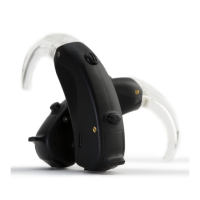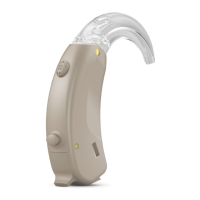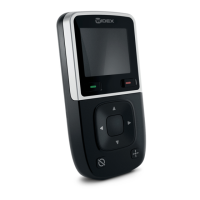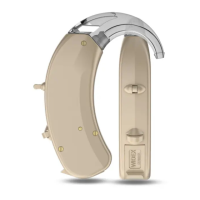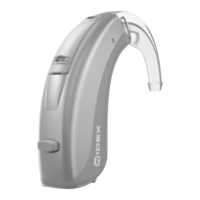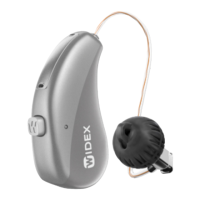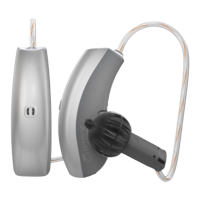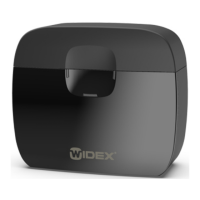Do you have a question about the Widex mind 220 Series and is the answer not in the manual?
Identifies left/right ear hearing aids using colored marks for user convenience and proper wear.
Explains audible signals used by the hearing aid for functions like volume changes and program selection.
Describes the function of the LED indicator on the hearing aid, such as for remote control signals or program activation.
Recommends size 13 zinc-air batteries and advises on obtaining replacements and checking expiration dates.
Provides step-by-step instructions for inserting a new battery, including removing the tab and waiting 60 seconds.
Details the acoustic warning for a low battery and stresses the importance of replacing batteries promptly.
Explains how the battery drawer functions as an on/off switch for the hearing aid.
Guides users on how to correctly insert the earmold and place the hearing aid behind the ear for comfort.
Provides instructions on how to safely and correctly remove the hearing aid and earmold from the ear.
Explains how the hearing aid volume is adjusted automatically and manually using a lever.
Lists and describes the various listening programs available, such as Master, Music, TV, and Comfort.
Details how to change listening programs using the program button and identifies program indicators.
Explains the unique Zen program, its purpose as a relaxing background, and its tailoring to hearing loss.
Provides recommendations for holding the telephone near the ear for optimal sound reception.
Instructions for cleaning the hearing aid using a soft cloth and advice on blocked microphone openings.
Introduces the remote control as an accessory providing additional functionality for the hearing aid.
Describes the T-DEX accessory for connecting hearing aids to mobile phones via telecoil.
Explains the audio shoe for direct connection to external audio equipment and accessories.
Provides a guide to common hearing aid problems, their potential causes, and recommended solutions.
Offers essential advice on protecting the hearing aid, including proper storage, avoiding extreme conditions, and handling.
Warns about the severe risks of swallowing hearing aids/batteries and keeping them away from children.
Advises against putting batteries in the mouth, emphasizes inspection, and warns against self-repair of damaged parts.
Covers risks of incorrect battery replacement, sharing aids, and potential skin irritation from materials.
Highlights the importance of ear ventilation and warns against using alcohol or chlorine for cleaning hearing aids.
Warns against using aids in hazardous environments and during medical procedures like X-rays and MRIs.
Discusses potential electromagnetic interference and strictly prohibits attempting to open or repair the hearing aid.
Clarifies that hearing aids assist but do not restore normal hearing and require consistent use for full benefit.
Explains that hearing aids can increase earwax buildup and advises seeking professional ear cleaning.
Lists specific medical conditions or ear issues that may contraindicate the use of a hearing aid.
Emphasizes the legal and health requirement for a medical evaluation by a physician before purchasing a hearing aid.
Outlines the process of hearing aid evaluation, fitting, and the option of trial programs.
Details legal restrictions on hearing aid sales and the specific considerations for children with hearing loss.
Explains common symbols for manufacturer, date of manufacture, use-by date, and batch code.
Details symbols for catalog/serial numbers and environmental handling like sunlight, moisture, and temperature limits.
Explains symbols guiding users on reading instructions, cautions, and warnings associated with the product.
Describes certification marks like CE and WEEE, indicating product compliance and proper disposal requirements.
Explains the symbol indicating potential electromagnetic interference that may occur with the product.
| Brand | Widex |
|---|---|
| Model | mind 220 Series |
| Category | Hearing Aid |
| Language | English |
